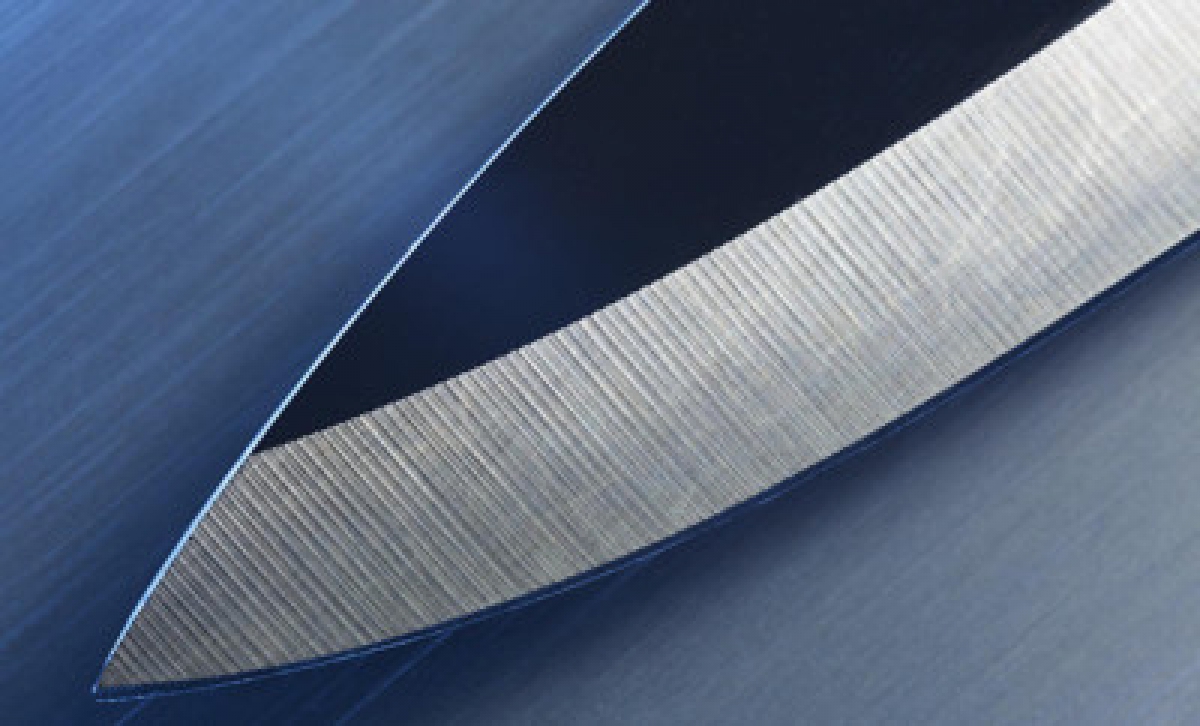It is very important to always maintain the edge of the knife. It is advisable to sharpen a knife while it is still reasonably sharp than to rather let it become completely blunt.
When rubbing steel on a sharpening stone use light oil. This lubricates the sharpening action and floats away particles of steel as they are scraped off.
Sharpen the blade at an angle of approximately 20 degrees. This will yield a bevel with a sharp, all-purpose edge. Increasing the angle with 5 degrees will increase an edge for more rugged use. For a sharper, more delicate knife decrease the angle by 3 to 4 degrees.
When honing on a stone, a microscopic burr on the edge will appear even though it is a fine stone. If the edge feels sharp at this stage, it is due to this jagged edge. This edge might easily break off and then become an inferior edge. The burr must be removed to achieve a finely honed knife. This is done by stropping the blade on a piece of leather that is treated with a polishing abrasive. A hard muslin buff at high speed is ideal when available. Pass the edge of the blade across the face of the compound loaded wheel at about two and a half times the angle used when formed. Continue this action back and forth on both sides of the edge until the burr is completely removed.
The flannel threads of the buffing wheel are flexible. These threads will follow the buff around the microscopic edge of the knife and cut it away. The resulting edge is razor sharp, but more importantly, it is stropped by the flexible threads of the buffing wheel to round the microscopic tip of the edge. Therefore at the microscopic level, the edge will be blunt like a chisel. This edge is sharp enough to shave the hair off your arm and smooth enough to slide easily across your fingernail.
You can also sharpen the blade on a belt sander using a #400 grid belt running away from the cutting edge.
After the stroke turn the knife around and work on the other side of the blade. Work over the unsupported area of the belt since this produces less friction heat and a more even edge.
The object is to form a visible burr along the entire length of the cutting edge. Thus allowing you to create a blade as sharp as possible. There would also be a uniform sharpness wherever the burr is visible. The buff forms because the steel at the very tip of the edge becomes very thin and therefore it finally becomes flaccid, like foil. At this point, the abrasive will no longer cut it. It will simply bent over and the thicker steel just beneath it is cut away, leaving the burr exposed. The burr will be visible if the blade is directly under a light from above. It appears as a very small, shiny strip right on the edge.
Herbst promises that "we will sharpen any knife we have made, free of charge. Return the knife to us with your contact detail and we will restore the knife edge".





